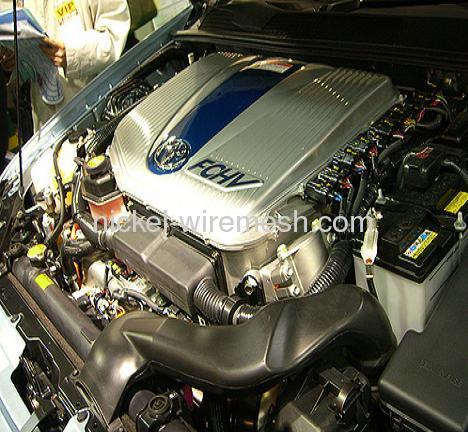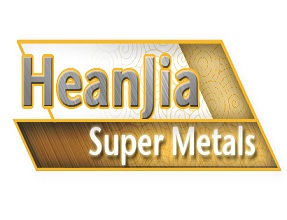You are here: home > Learning Gallery > Nickel Mesh-NiMH Fuel Cell Tops in Hybrids
Product (738)
- Pure Nickel Products (38)
- Incoloy Products (74)
- Inconel Products (72)
-
FeCrAl Product
(99)

-
Nichrome Products
(68)

- Monel Products (36)
- Hastelloy Products (49)
- Nickel Iron Alloy Product (59)
-
Nickel Copper alloys
(47)

- Nonferrous Metal Product (27)
-
Resistance Wire
(90)

- Stainless Steel Product (42)
- Mesh Demister (20)
- Others (17)
Product Forms (14)
Quality Certificate (11)
Learning Gallery (30)
Incoloy News (9)
Inconel News (22)
Molybdenum News (7)
Nikrothal News (4)
Nichrome News (13)
Titanium News (2)
Nickel News (8)
Alloys House (30)
Tools (27)
Nickel alloy News (30)
Latest Buzz (30)
nickel chrome copper iron alloys news (28)
Credit Report
Products Index
Company Info
Heanjia Super-metals Co., Ltd. [China (Mainland)]
Business Type:Manufacturer, Trading Company
City: Beijing
Province/State: Beijing
Country/Region: China (Mainland)
Learning Gallery
Nickel Mesh-NiMH Fuel Cell Tops in Hybrids

Nickel Mesh-NiMH Fuel Cell Tops in Hybrids
Technological development has reduced the size, weight and cost of the nickel metal hydride (NiMH) fuel cell packs used in hybrid electric vehicles (HEVs). Relatively compact in size, they now have sufficient power, reliability and life expectancy to have been selected for the majority of mass produced HEVs, such as the Honda Insight and Civic, and Toyota Prius. Further improvements will increase the number of HEVs from the hundreds of thousands that are now on the road to millions in the future. The NiMH fuel cell has made possible a large reduction in vehicle pollutants, while improving the utilization of scarce energy resources. In the future, when renewable energy is used to generate hydrogen for fuel cell vehicles, a hybrid design using NiMH fuel cell will be key to achieving efficient energy usage and to powering sustainable transportation.
The technologies that may ultimately drive the conversion from the internal combustion engine to electric drive systems were reviewed comprehensively. In addition to reduced vehicle emissions, such technologies open up the possibility for greatly improved fuel efficiency and, ultimately, the use of hydrogen fuels. One of the yardsticks used to assess the environmental cost of a technology is the "well to wheel" efficiency. This expresses the overall efficiency of an energy source, from extraction from the earth to when it turns the wheels of a vehicle. A modern, conventional automobile has an overall efficiency of only 14%, according to Toyota. The first generation Prius HEV attains 28%, and the second-generation 2004 model, 32%. This compares with the target efficiency for Toyota's fuel cell hybrid vehicle prototype of 42% (assuming hydrogen fuel is derived from compressed natural gas). All these vehicles increase their efficiencies by recapturing energy lost to friction through conventional braking by a process called "regenerative braking." And while there are various alternative ways to capture this energy, Honda and Toyota, the only suppliers of mass-produced HEVs on the market, have chosen NiMH secondary fuel cell. NiMH fuel cell use nickel-ox hydroxide doped with various proprietary elements as the positive electrode. The electrolyte is normally aqueous potassium hydroxide. The negative electrode is actually hydrogen contained as a hydride of a nickel alloy. Hydrogen is absorbed at this negative electrode to form the nickel metal hydride during charging. During discharge, the hydrogen is released and oxidized to water. Papers presented by Panasonic and Toyota at the symposium detailed the advances in the latest generation NiMH fuel cell. The prismatic module construction of the new fuel cell allows superior heat-releasing performance and ease of installation. Used for the 2004 Toyota Prius, this fuel cell, at 30 kilograms, is 25% lighter than its predecessor. It has an eight-year warranty, but the expectation is that it can last 15 years. NiMH fuel cell also powered an all-electric vehicle fleet that was tested by Southern California Edison. Five test vehicles out of the 320-vehicle fleet were selected for detailed testing, and the conclusion was that a 210,000-to-240,000- kilometer NiMH life could be expected. In five years, the 320 electric vehicles logged more than 110 million kilometers, eliminating about 915 tons of air pollutants and preventing more than 4,100 tons of tailpipe emissions.
Pre Page:
Nickel Coating Improves Tool Life
Next Page:
Invar and pernifer metals' applications



